Some posts on this site contain affiliate links. If you book or buy something through these links, I earn a small commission (at no extra cost to you). Take a look at my privacy policy for more information.
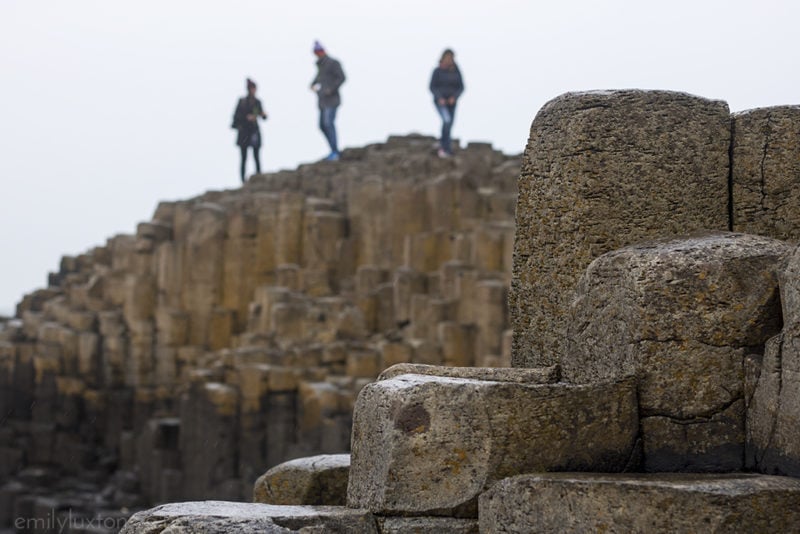
“Now having heard that, who would you believe. Geologists, scholars, wise and learned men, or me – an old man with silver hair and a silver tongue to match?”
When we asked to hear the legend of the giant down on the wind- and rain-swept Causeway Coast, my friend Ruth and I felt just a little bit like wide-eyed children asking for a bedtime story.
But that’s exactly what we wanted; our guide Mark was a genuine Irish seanchaí (pronounced shansee), or storyteller, and he’d already regaled us with some cracking local legends as we explored nearby Dunluce Castle. Now, he’d brought us to the Giant’s Causeway, and what better setting for the tale of Fionn mac Cumhail (aka Finn MacCool), the giant himself?
Apparently, the current setting wasn’t quite good enough, though, as Mark led us down into Port Noffer, the Bay of the Giant, before he’d begin. He had to shout over the wail of the wind that was slapping across the coastline in angry ferocity, while we dug our hands into our pockets and shivered beneath the grim sky, but it all only added to the drama.
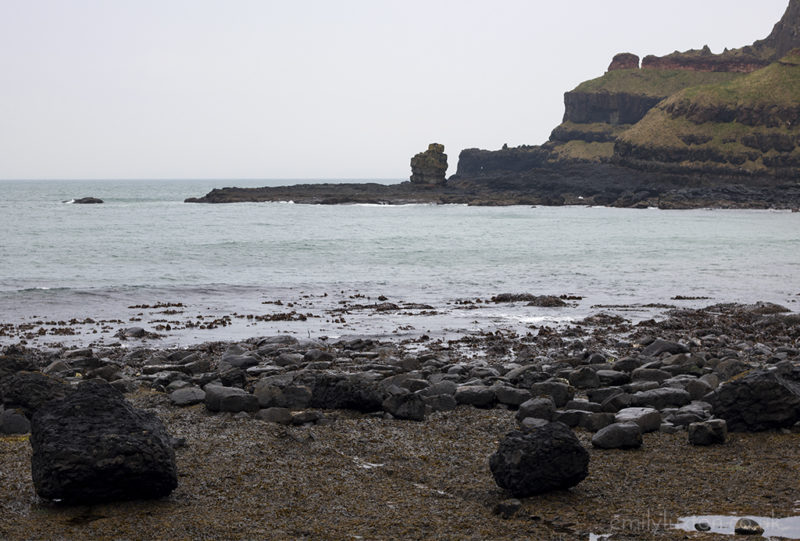
The story goes like this. Fionn mac Cumhail is a giant, who lives with his wife Oonagh in the bay “without fear nor favour of any man, bar one: the Scottish giant, who lives across the Irish sea, called Benandonner”. One day, Fionn decides to fight Benandonner, so he uses the basalt columns that litter the bay to build a causeway. But when he reaches Scotland and sees the size of the Scottish giant, Fionn realises that he’ll never defeat him and runs home to Oonagh, Benandonner hot on his heels.
“’Oh Fionn, yet again, I am going to have to come up with a plan to get you out of trouble’ [says Oonagh], and this is something that Irish girls have been doing ever since, God bless ’em.”
The plan is simple. Fionn dresses like a baby and hides in bed, and when Benandonner comes to call, Oonagh tells him that Finn is out and invites him to tea. Fionn pretends to cry, and Benandonner sees what he thinks is a 54 foot baby. Terrified to face the father of this enormous baby, Benandonner runs home, smashing the basalt causeway behind him.
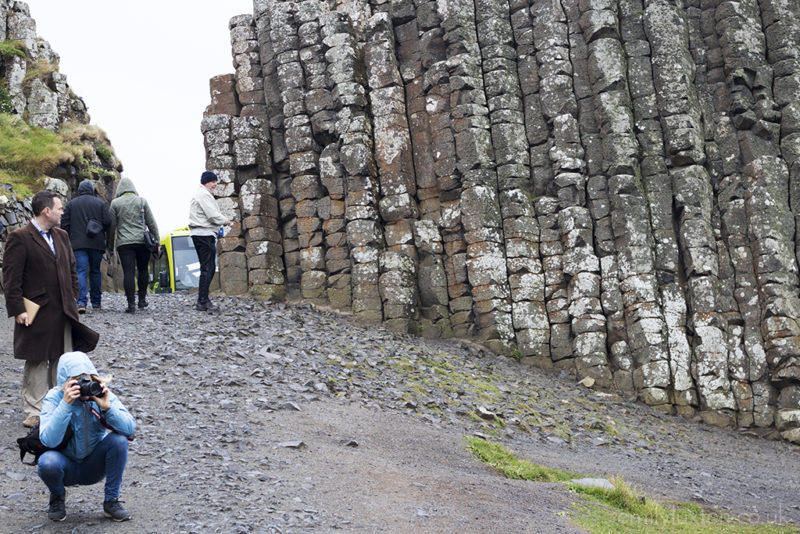
It’s a great story, perhaps more interesting than the geological explanations behind the basalt columns of the Giant’s Causeway, which in fact are the result of an ancient volcanic eruption. But, Mark is full of more than just legends; his family can trace their lineage back to the survivors of the Girona shipwreck, and they’ve worked on the Causeway ever since. Mark himself is the third generation of Causeway tour guides in his family, so he knows his stuff, and after years spent working for the National Trust he launched his own tour company – Dalriada Kingdom Tours – which draws on his passion for local history and storytelling.
It was a breathtaking landscape, littered with those fascinatingly mathematical hexagonal basalt columns that look as if they must have been hand carved. But the Giant’s Causeway was just one of many amazing landscapes along the Causeway Coast. We’d spent the day touring with Glenara Elite Travel, a local tour company that hires different expert guides for each stop of the tour. For history, we had Mark, who filled our heads with the brutal and bloody myths, legends, and genuine facts of the coast. Up at Dunluce Castle, a crumbling ruin perched on a clifftop overlooking the rough Irish Sea, we had the grim history of the MacQuillan clan, who built it, and the MacDonnell clan, who seized it in the 1550’s – a series of bloody tales, some true, others less so, and all of them probably embellished.
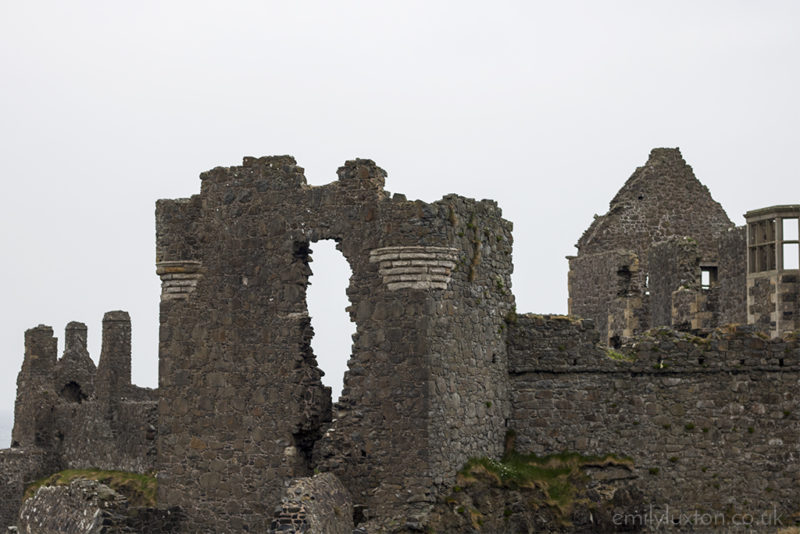
“Really good storytellers know the difference between mythology, legend and folklore. And for you to weave a story together and create an atmosphere for the story, you have to have an understanding of those three elements, and put that into your story.” Mark Rogers.
There was the tale of the kitchen that collapse into the sea during a lavish party, killing everyone inside. The story of Sorely Boy MacDonnell, who incurred the wrath of the English, and watched his whole family slaughtered on the shore of nearby Rathlin Island. But my favourite by far was the ghost story, about the Banshee of Dunluce, Maeve McQuillan. She fell in love with a boy from her family’s rival clan, the O’Cahans, but her father forbade their relationship. Just like any good love story heroine, she disobeyed him, and ran away with her lover, meeting him in the small cave below Dunluce known as the Mermaid’s Cave. Tragically, the pair drowned in a terrible storm, and Maeve’s ghost is said to haunt the tower to this day, wailing and screaming.
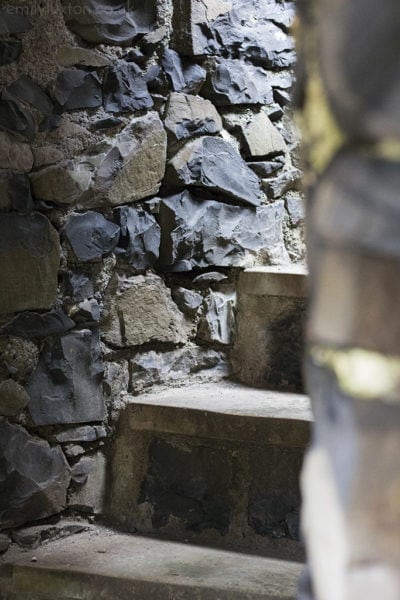
Dramatic tales abound on the dramatic, rugged clifftops of the Causeway Coast. We’d begun our tour at Mussenden Temple and Downhill Demesne, a ruined house and it’s unusual cliff-side library, built by the Earl Bishop. By all accounts, he was an eccentric and flamboyant character; the sort of man who’d scatter flour on the hallway floor after parties, so he could see who visited who in the night. He was also embroiled in a number of rumours about his relationship with his niece, and had a string of mistresses which which earned him the nickname ‘the English Casanova’. Yet another great character in the fascinating story of the Causeway Coast and Glens.
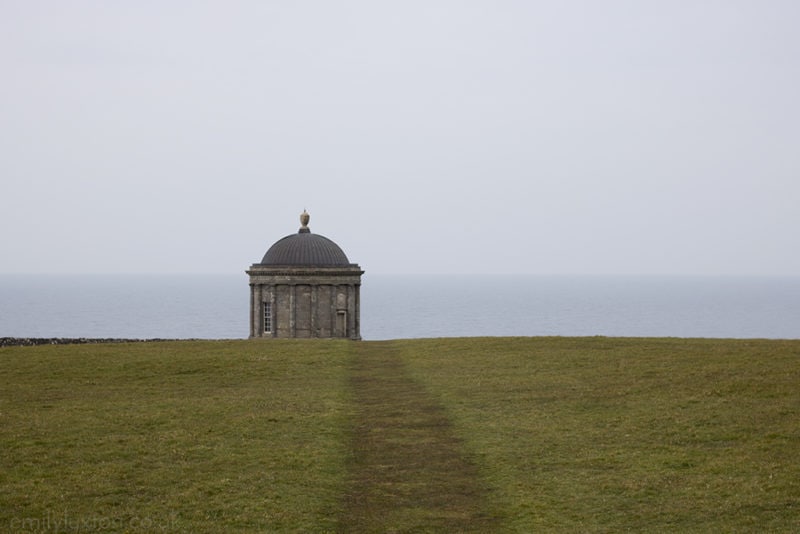
With all this drama and history surging through the area, it’s no wonder that the Causeway Coast has been the backdrop to dozens of films and TV shows. Most recently, and perhaps most famously, the Game of Thrones franchise has filmed at several locations, including the eerily beautiful Dark Hedges.
This beech-lined road, a former driveway to Gracehill House, played the Kingsroad in the TV series, and looks almost fictional with its perfect tunnel of interlocked trees. Reportedly haunted by a ghost known as the Grey Lady, the Dark Hedges is a brilliantly spooky location, and the play of light through the tangled branches overhead makes this a popular spot for photography. Thanks to its added boost in fame as one of the many GOT filming locations in Northern Ireland, the road is rarely empty of tourist these days, but thanks to the ceaseless drizzle and cold grey skies we had the spot almost to ourselves.
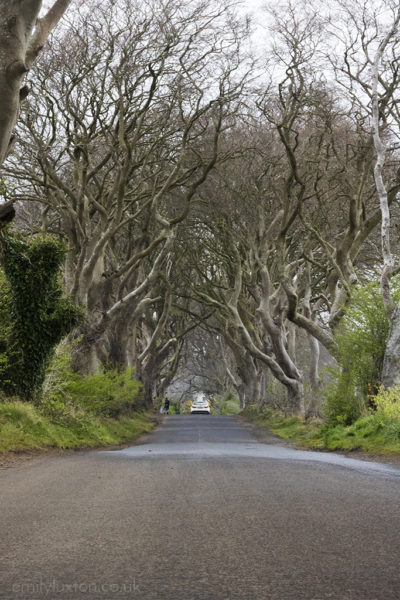
Our final stop of the day was another particularly dramatic one; the famous Carrick-A-Rede rope bridge. Once used by salmon fishermen to cross to “Rocky Island”, this has been turned into a tourist attraction by the National Trust thanks mainly to the great views it provides back along the causeway Coast, and across the sea to Rathlin Island. It’s also pretty high and bouncy, and crossing was a little bit nerve racking (although I’ve got to admit that I was more worried about dropping my phone than I was about myself!).
Suitably frozen by the gloriously unpredictable British weather, and full with about as many local legends as we could take, we headed home to curl up in the gaslit bar of the beautiful Bushmills Inn – our exquisite home away from home for the weekend.
This was a press trip organised by the Causeway Coast and Glens Borough Council. As always, all words and opinions are entirely my own (except quotes!).

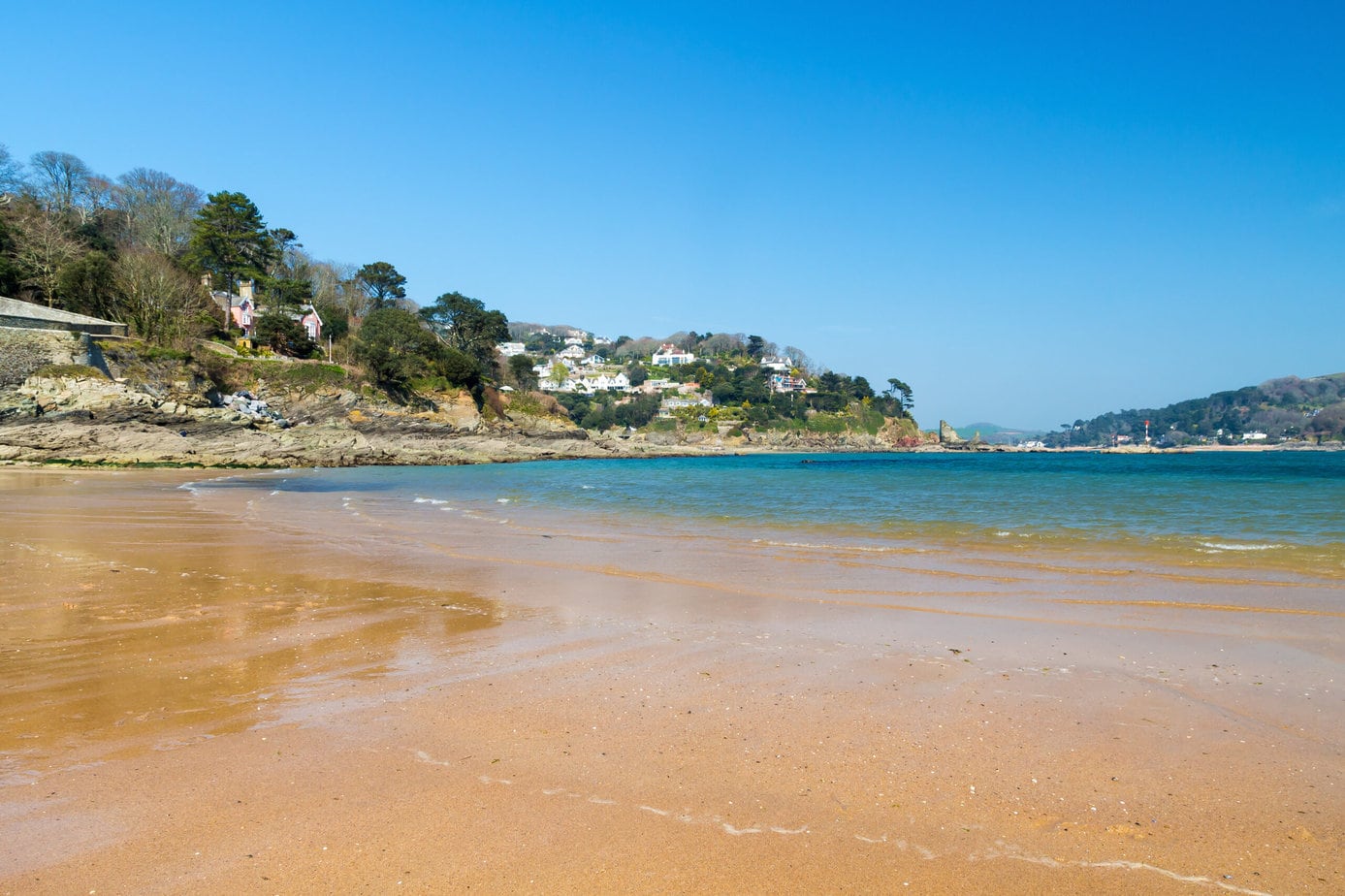
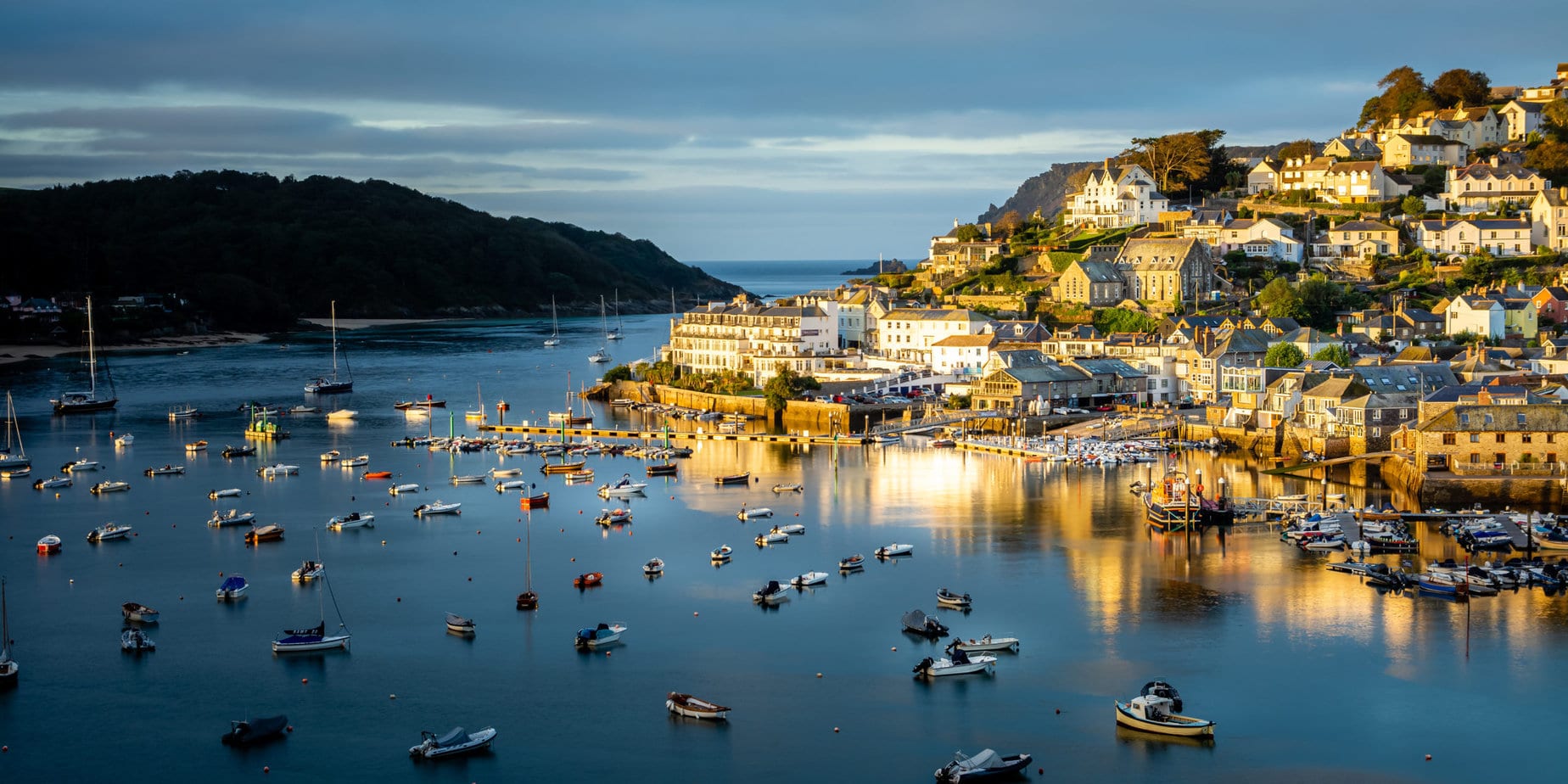
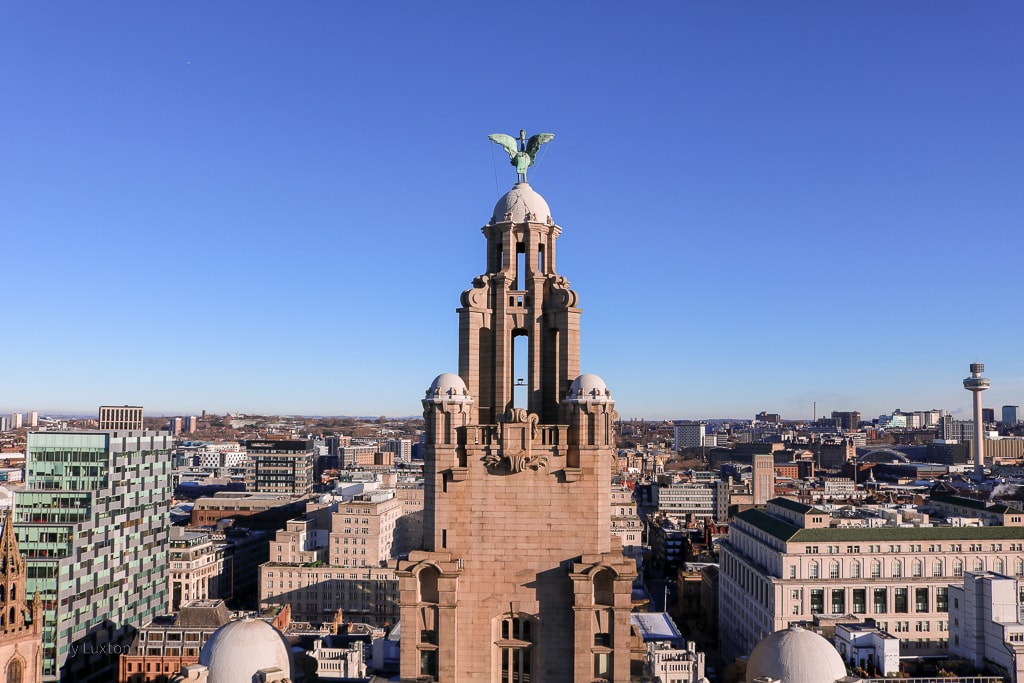
Emily your article is extremely well written ,delightful to read and I am in your debt for your kindness. You are a credit to your profession and it was my real pleasure to guide you around some of our iconic sites. I am delighted that you saw how much I love doing what I do . Thank you. Mark.
Thank you Mark! This is probably one of the nicest comments I’ve ever received :) Thanks a million for a wonderful day out and some amazing stories. It’s clear how much you love your profession, and your talent for storytelling was inspiring. Thank you :) :)
Interesting Set of Causeway coast legends…All seems worth visiting..
Thanks Maggie! It was such a fascinating day out, I loved hearing the stories :)
Thank you Emily ,it was a real pleasure to tour with you both I enjoyed your company . Please come back again soon
Thank you Mark :)
Emily, you were blessed on your travels with top representatives of the Causeway Coast & Glens. I loved your article, telling of our exceptional part of the world and the people who enable visitors to share in it. A beautiful, descriptive and very inviting piece, I really enjoyed it.
Thanks Janet! I was blessed – we had some of the best local tour guides showing us around. And I loved the Causeway Coast, what a beautiful part of the world. Thanks so much for your lovely comments :)